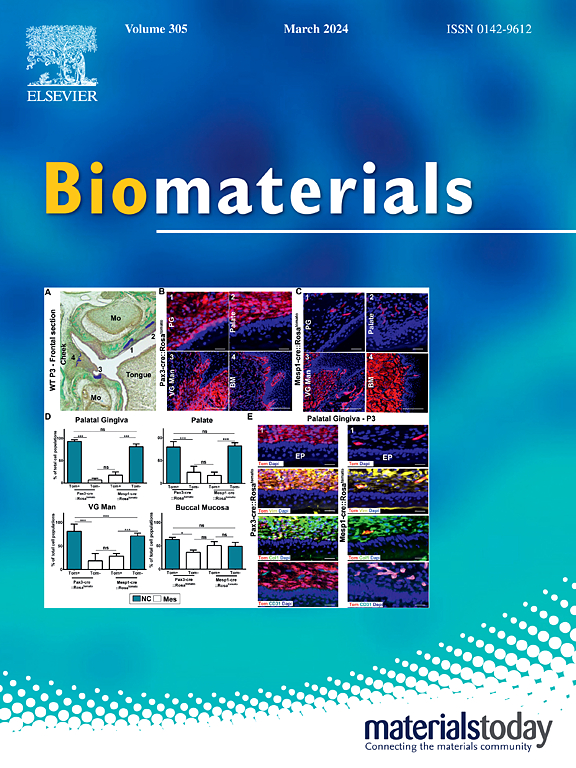Generation of patient-derived sarcoma organoids for personalized drug screening and precision cancer immunotherapy
IF 12.8
1区 医学
Q1 ENGINEERING, BIOMEDICAL
引用次数: 0
Abstract
Sarcomas are malignant tumors that display inter- and intra-tumoral heterogeneity. Patient-derived organoids enable the creation of systems that stably recapitulate many aspects of parental tumors in vitro. Thus, the idea of using patient-derived organoids for therapeutic screening and precision medicine is tantalizing. Here, we describe a biobank of soft tissue and bone sarcoma (STBS) organoid lines derived from patient tumor tissues. In total, we established 44 STBS organoid lines, representing eight subtypes of STBS. These STBS organoids faithfully recapitulate the histological features, mutational profiles, gene expression profiles, and cellular diversity of the corresponding tumors. STBS organoids can be used not only for screening chemotherapeutic and target therapeutic drugs, but also for predicting immune responses. Our data demonstrate the potential of STBS organoids for both basic research and for designing personalized sarcoma treatments.

用于个性化药物筛选和精确癌症免疫治疗的患者源性肉瘤类器官的生成
肉瘤是一种表现出肿瘤内部和肿瘤间异质性的恶性肿瘤。患者来源的类器官能够在体外稳定地再现亲代肿瘤的许多方面。因此,使用患者来源的类器官进行治疗筛选和精准医学的想法是诱人的。在这里,我们描述了从患者肿瘤组织中提取的软组织和骨肉瘤(STBS)类器官系的生物库。我们总共建立了44个STBS类器官系,代表了STBS的8个亚型。这些STBS类器官忠实地概括了相应肿瘤的组织学特征、突变谱、基因表达谱和细胞多样性。STBS类器官不仅可用于筛选化疗药物和靶向治疗药物,还可用于预测免疫反应。我们的数据证明了STBS类器官在基础研究和设计个性化肉瘤治疗方面的潜力。
本文章由计算机程序翻译,如有差异,请以英文原文为准。
求助全文
约1分钟内获得全文
求助全文
来源期刊

Biomaterials
工程技术-材料科学:生物材料
CiteScore
26.00
自引率
2.90%
发文量
565
审稿时长
46 days
期刊介绍:
Biomaterials is an international journal covering the science and clinical application of biomaterials. A biomaterial is now defined as a substance that has been engineered to take a form which, alone or as part of a complex system, is used to direct, by control of interactions with components of living systems, the course of any therapeutic or diagnostic procedure. It is the aim of the journal to provide a peer-reviewed forum for the publication of original papers and authoritative review and opinion papers dealing with the most important issues facing the use of biomaterials in clinical practice. The scope of the journal covers the wide range of physical, biological and chemical sciences that underpin the design of biomaterials and the clinical disciplines in which they are used. These sciences include polymer synthesis and characterization, drug and gene vector design, the biology of the host response, immunology and toxicology and self assembly at the nanoscale. Clinical applications include the therapies of medical technology and regenerative medicine in all clinical disciplines, and diagnostic systems that reply on innovative contrast and sensing agents. The journal is relevant to areas such as cancer diagnosis and therapy, implantable devices, drug delivery systems, gene vectors, bionanotechnology and tissue engineering.
 求助内容:
求助内容: 应助结果提醒方式:
应助结果提醒方式:


